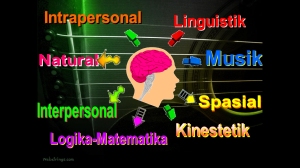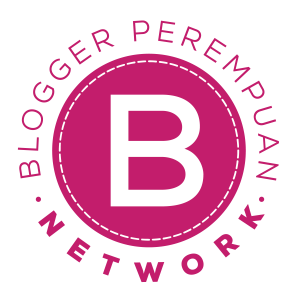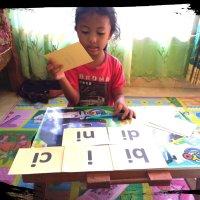Category Archives: English Teaching (TLL Project)
Control the Environment
I interviewed some students of the class that I would teach at the school. My focus question was about the method of their English teacher in teaching. They told me how usually the teacher in the class.
“Firstly, the teacher greets us, then, asks our condition, and finally explains the lesson. She uses the whiteboard to explain. However, she seems like doesn’t care to us. So, some of us give full attention, some of us play the blackberry, and even there are students who just sleep. The teacher never complains us.”
I was actually sad to know the condition of the class. Honestly, I was also afraid if the students would do so when I taught them. Because of that, I want to make the class better. At least, all students in the class involve in the learning and teaching process. Here I feel the need for self-determination. I was motivated to control class environment. Then, I tried to apply students centered learning by jigsaw activity. Maybe some students did not like this method because they have to move and move, but I saw their enthusiasm and serious when explaining the topic they got to their friends. There were no students who sleep anymore although there are students who still have time to check their black berry for a moment. I think I was success to make them be involved in the class teaching and learning process.
Reflection of School Experience Part 2 in the fifth semester
A story about making a Question
(Important to Read, for you, Great Generation of Educators)
This is only a kind of learning reflection after I attend my course, Language Testing and Assessment. On that day, my lecturer taught us about how to test reading. We were asked to make a construct of reading. Simply, we had to make 4 questions to test reading after the lecturer finished his explanation.
Firstly, he gave us a text. Then, we made questions from that text in group of 4. The discussion process was very interesting. And the presentation was more interesting. The groups check the works each other. We seemed like fight and shoot each other, like in a big and hot war. We thought critically to comment other group’s work and convince other group when they comment or tackle our work. It seems negative, but we can say that it is just a game. We even feel no offense after the presentation done. I felt having new spirit in this course. Whereas, some weeks before I was down and want to give up in this course because the material is too much and such as an abstract thing which hard to be understood. However, on that meeting, I got new spirit. I really felt a need to learn this course seriously because it teaches me all about language testing and assessment. I need it as I will be an educator, Insha’Allah.
During the presentation on that day, I found some cases in creating test questions, such as:
– The distracter in choices of multiple choice task tests is not meaningful (too easy to guess), not balance (example: if the answer expected from a question of similar vocabulary is adjective, all choices must be adjective).
– The question creates possibility of too general answers from the students. It happens in essay test task. The solution is by giving the alternative answers, like make it into multiple choices.
– The answer can be found without reading the given text.
Those cases influence the quality of the test item and its reliability. So, we as the educator or subjects who will be test rater, should concern on the common cases like I stated above.
Really, I am interested in that class.
“Many people say that reading is the easiest test to give. However, to create a good quality reading test item is not easy.”
“Graduate background” is One Challenge for Teacher Candidate
By: Endang Sriwahyuni
 Let’s imagine something firstly here. If you are a headmaster of a school, then there are two men register to be teacher in your school, which characteristic you will choose? Easily say it the name A and B. A was graduated from faculty of English Education who has very good basic in teaching and all about pedagogy. While B, was graduated from English Literature (pure science of English) who has very good English competence. Both of them are from the best and popular university of the country and were graduated with best mark. So, which one you will choose?
Let’s imagine something firstly here. If you are a headmaster of a school, then there are two men register to be teacher in your school, which characteristic you will choose? Easily say it the name A and B. A was graduated from faculty of English Education who has very good basic in teaching and all about pedagogy. While B, was graduated from English Literature (pure science of English) who has very good English competence. Both of them are from the best and popular university of the country and were graduated with best mark. So, which one you will choose?
If we use the first one, of course it is safe because he is prepared to be teacher with all his skill and education background. However, sometime the case of education graduate is only focuses on the pedagogy or teaching technique, but less concern on content.
If we choose the second one, we will provide students the teacher with good quality of content knowledge. Unfortunately he is not prepared as a teacher so he never gets the subject of teaching technique.

People with pure science graduate is considered better than education science graduate. Especially in Indonesia, it is because pure science is more popular than education science. So, many cleaver people prefer to pure science to dig up the content knowledge. If finally they are interested to teach, just follow some easy steps then they can teach at any schools they want.
The headmaster feel safe by providing teacher who have large knowledge because
he/she will transfer that knowledge to students. (Hmmmm… Does it guarantee that they can convey the material well as never get teaching technique course?) I have experience on it. My physic teacher when I was in senior high school graduate from physic pure science of one of popular university of this country. He mater the material very well, but, unfortunately, he could not teach the students well. Maybe because he did not knoe the method or technique of teaching. However, people will solve it easily. Nowadays there are so many workshops about being good teacher, so the teacher with pure science background can join it to improve their teaching skill. Hmmm.. even I got this kind of information directly from the teacher who has pure science background when I was in school observation. Unfortunately, he teaches better than another teachers who have teaching education in the same major.
It is a one challenge for us, the teacher candidates in the future. What we need to master is not only the skill to teach students well, but also the content knowledge. Because however, the purpose of teaching is not to show how well we teach but how can we transfer the knowledge or help students in learning the material we teach.
Inspired by PETA class of week 3
Supporting resources:
(http://sepenggalperjalanan.blogspot.com/2008/04/basis-no_23.html)
(http://www.mtsnranto.co.cc/2009/10/guru-siapa-dia-paulo-freire-tokoh.html)
Pictures:
http://im-balance.blogspot.com/2010/03/opportunity-cost-adalah-biaya-yang.html
http://www.newbloging.com/2010/05/5-top-game-di-facebook.html
The Importance of Feedback
 Feedback /ˈfiːdbak/ is information about reactions to a product, a person’s performance of a task, etc. which is used as a basis for improvement. That is based on the oxford dictionary online definition. In teaching, feedback is also one of component. It means the respond of teacher toward students’ assessment, task, or performance.
Feedback /ˈfiːdbak/ is information about reactions to a product, a person’s performance of a task, etc. which is used as a basis for improvement. That is based on the oxford dictionary online definition. In teaching, feedback is also one of component. It means the respond of teacher toward students’ assessment, task, or performance.
Why does it important for students?
It is because feedback can be spirit burner for the students to improve their competence. For example, when they get bad mark, they know that they get bed mark and be spirit to improve it. Or, keep fighting to get good mark.

With feedback, students can know in which part they make mistake so that they can learn more and next time will not do the same mistake.
Feedback that is also component of effective teaching (see my previous posting
https://endangsriwahyunie.wordpress.com/2011/01/09/191/ ). As the sense of teaching is helping students learning, and learning itself is process from “do not know” to “know” even unde
rstand, so feedback is the tool. It helps students to make their selves better in improving knowledge.
The teacher has to concern on it. Feedback is not only the words “you are good” but also the explanation of responds toward students’ product or performance. With feedback, the teacher can help students to do improvement. See this video for additional imformation http://www.youtube.com/watch?v=BA4rdmVPba4
Picture:
http://blog.99designs.com/2010/05/12/feedback-for-designers-99designs/
The Essential of Effective Teaching: Key Behaviors
By: Endang Sriwahyuni
 Based on the research conducted by T. Good and J. Brophy in 1987, there are five key behaviors that become the essential of effective teaching, they are lesson clarity, instructional variety, teacher task orientation, engagement in the learning process, and student success rate. Let’s enjoy reading this writing.
Based on the research conducted by T. Good and J. Brophy in 1987, there are five key behaviors that become the essential of effective teaching, they are lesson clarity, instructional variety, teacher task orientation, engagement in the learning process, and student success rate. Let’s enjoy reading this writing.
Lesson clarity is indicated when the teacher make the points of explanation clearly to students and give concept in step by step order.
Instructional Variety means that the teacher uses the following way. Using attention gaining device (for example begins with challenging question, visual or examples that must be different with previous lesson activity), showing enthusiasm (through eyes contact, voice, and gesture), varying model of presentation, using variety of reward and punishment, incorporate students idea participation in some aspects of instruction, and varies type of questions (e.g. match question to behavior and complexity of the lesson objective. Vary the complexity of lesson objectives in accord with the unit plan).
Teacher task orientation refers to the allocation order of classroom time management. There some question teachers have in applying this key behavior. They are about how much time will teacher spend (for presentating, asking question, and encourage students to think independently), (organizing ifr teaching and getting students ready to learn), and (assessing learner performance). In this case, the teacher develop lesson plan that reflect the most relevant feature of the curriculum and select the most appropriate instructional model for the objective being taught.
Engagement in learning process is key behavior that refers to the following indicators. (1) Elicit the behavior immediately after the instructional stimuli. (2) Provides opportunity for feedback in a non evaluative atmosphere. (3) Using individual and group activities. (4) Using meaningful verbal praise to get and keep students actively participating in the learning process. (5) Monitoring seatwork and check frequently the progress during independent practice.
Students rate indicated with teacher who establishes unit and lesson content that reflects prior learning, ahow model of correct answer and how to attain it after first crude response is given, divides instructional stimuli into small chunk, plans transition to new material in easy to grasp steps, and varies the pace at which stimuli are presented.
In other that, there are helping behaviors that can be used in combination to implement the key behavior. They are: using students ideas and contribution, structuring (comments of teacher to organize what will come and what have done), questioning (to attract students directly involved in material taught), Probing (teacher statement that encourage students to elaborate the argument or answer), and teacher affect (good face expression, gesture, voice intonation, and general movement of teacher in teaching).
Adapted from: PETA course handout chapter 1 week 5
Pictures:
Experience of a Teacher Candidate: Wanna be an Effective Teacher
By: Endang Sriwahyuni
(a writing based on my experience)
82 School is still known as the high class school until my last week there in teaching assistance program, even maybe till now. Most of students always ignore the existence of the teacher in the class. When the teacher teach them, they sometime just talking with other, playing their cellphone, wearing headphone (maybe listening to music), or even fall asleep. Some teachers said that this is a usual case. It happens because the students are from high social economic family, rich people, so, they accustomed to do so, obeying nothing. Teacher can’t do anything to regulate students. Actually, I’m questioning on that point. Does students’ social economy status is the reason they ignore the teacher? Does the effectiveness of learning condition in class influence it?
In the third grade, the teacher tended to use lesson clarity, although not all indicators are within it. The instructional strategies he used were direct instruction. He opened the class, stated that he would explain in summary about English text types with power point. After that, they would have a test which shown in presentation slide, and they’ve to answer it in the given answer sheet. The result will be used for measuring the ability of students and for finally it became reference to explain more the text type that many students don’t understand. Many of them couldn’t differentiate between report and description, narrative and recount, etc. Then, my team were commanded to make a presentation of text types differences to teach 3rd grade students. In my opinion, that’s way is effective because it tries to make students really clear in the differences of the text. It means that teacher want to have a meaningful teaching and learning process. Unfortunately, there is a part which makes it rather not effective. When teacher explain in summary, many of students didn’t give attention, ignoring. It is maybe because the teacher only read what has been written in the slides. In other that, giving 2 minutes for answering questions of one text, then slide move automatically is not really wise, because the difficulties of each text is different. If I were a teacher in that condition, I will use the same way, but more considering the time split for each question, and in explaining students the summarize of the text type, I prefer to use acronym, for example, for generic structure of narrative is OCR by showing my thumb, seems like saying “okay” to someone named “R”. So, students will more easily remember :).
Experience in 3rd grade still not answers my question yet. Luckily, my team got opportunity to teach 2 classes of first grade. The teacher left us in the class. We taught about the English text type for class X, they’re procedure, narrative, and recount. First, we elicit students to update status, what come in mind toward those three text type. We also give simple messaging game to reduce their sleepiness. We didn’t explain directly the lesson, but giving some pictures and question that relate with the text type first. We combined the opinion and knowledge from students, then, restated and concluded. In every end of text type explanation, we ask them to reflect what we’ve explained. Finally, we gave them a group game to arrange given sentences and phrases in the paper pieces into generic structure, language feature and characteristics of each type, and present the result. We used “Engagement in the learning process” and also direct instruction to have effective teaching. This way is totally different with how their teacher taught them in procedure text who tended to use individual study. In my opinion, our teaching is effective because their reflection show their understanding toward our explanation. Even, majority of students were enthusiastic in following this class. I think because they felt involved and have role in learning process, not like usual who only listen to what teacher explain. However, updating status took much times because their first impression, before they knew how colorful are our teaching, is rather underestimate. So, they’re not enthusiastic.
Therefore, now I can answer my question. Students’ social economic class isn’t reason of why they ignore the teacher. It depends on how teacher can create effective teaching to create effective learning. I’m happy because my team can engage ’82 students with all of their status into our lesson. Hundred thank for our lecturers… 🙂
Picture:
A Teacher Needs to Know the Models of Learning
The core job of a teacher is teaching, so, is it important to know the model of learning in the class? Hmmm… . Absolutely it is yes. Why? because teaching is a media to guide students learning. So, the teacher needs to know the models of learning. The aim of it is to conduct various learning activities in the class.
Based on the book written by Watkins, Carnell, and Lodge entitled “Effective Learning in Classroom”, there are three models of learning, they’re reception, construction, and co-construction.
Reception is model of learning where there is transmission of knowledge from the external source (for example is teacher) to the receiver (students). So, learning here is being taught. The teacher gives students the concept and knowledge while students are only receiving it purely.
 Construction is totally different with reception because in this model, students construct by their selves the meaning of concept of knowledge through discussion, discovery, open-ended learning, making connections, etc. Here, learning means an individual sense-making.
Construction is totally different with reception because in this model, students construct by their selves the meaning of concept of knowledge through discussion, discovery, open-ended learning, making connections, etc. Here, learning means an individual sense-making.

Co-construction model let students or learners to interact with other learners then collaboratively building knowledge. It can be in form of group discussion, jigsaw, etc.
With those three models of learning, the class activity will
make the students’ thought be balance as they ever taught directly by teacher like the common happen in school, they ever sharp the individual sense-making, and even they ever cooperate with others in establish the knowledge. It will be very enjoyable learning in the class if there are various activities applied. So, teacher need to know, even master and apply the three models of learning for students.
Five Instructional Strategies, Which one is the best?
By: Endang Sriwahyuni
There are some strategies that can be used for giving instruction in the class. It is important for teachers and candidate of teachers to master this strategies. It is because an instruction can impact to whether or not students understand about what we talk and want. Before talking furthure, let’s clarify the following terms.
Instructional strategy is a general approach such as direct, indirect, experiental, collaborative, and individual study.
Instructional method means a specific approach like lecturing, small group report, etc.
Instructional skill is a specific teacher behavior. For example: giving demonstration, asking questions, giving directions, etc.
So, what i am going to write here is about the general approach of instruction which is called as “instructional strategies”.
There are five kinds of instructional strategies, they are: direct instruction, individual/independent study, indirect instruction, experiential learning, and collaborative learning.
Direct Instruction is the approach which is also called as teacher-centered. Here, the teacher is the all resources for students in the class. The example of this method is lecturing, didactic questioning, power point presentation, etc.
Individual study is an approach where the teacher gives instruction to students doing something. Then the students do it by themselve (individually) and they will also consult their works to the teacher. We can also called it as teacher – student- teacher- student. The examples of this method are giving assignments like essay, repot, project, journal, etc.
Indirect instruction is a kind of believe that the learning is more meaningful when students can seek and discover the knowledge. For example: debate, panels, brainstorming, group investigation, etc.
Experiential is kind of strategy that is applied by giving students the experience in what are being learned. It seems like feel the real through various design of activities from teacher.
Collaborative learning where the students are in some groups to discuss, share, explore question, complete project, and interact each other.
From the five kinds of instructional strategies above, the common society will decide that the direct instruction is the worst in term of effectiveness because it does not engage students in learning, no interaction between teacher and students and students with another students. The teacher is the only center of all activities. However, basically, those five kinds of instructional strategies are incomparable. Each of them has its own capacity in creating effectiveness of the class. Direct instruction is also effective when it is used for acquiring information or step-by-step skill. It is also will be effective when the teacher is knowledgeable and skillful.
For the additional information, now it has been found the center strategies where the activities in the class is based on technology usage like smartboard to subtitute blackboard, videos, and another technology equipments. It is because of the progress of the time. You can see more about it in the video through this link http://www.youtube.com/watch?v=Ls3jcdSk85c
So, basically, there is no worst and best in the instructional strategies, just depend on what are being taught and how the teacher apply it.
🙂
Planning for Instruction with Understanding by Design
Are we aware? Instruction is very important in influencing the understanding of students toward the lesson we teach. If the instruction is clear and appropriate, it provokes students understand better than if the instruction is in contrast. Instruction here is of course instruction in teaching as the effective teacher.
What actually come up in your mind when hearing the word “effective teacher”? Almost of us will answer that effective teacher is teacher who are able to teach in relax, enjoy, and fun so that students can easily understand the material. Unfortunately, we often see the reality that in many schools, sometime teaching and learning run with full of fun but lack of meaning of the material itself. It seems like the learning and teaching design doesn’t have sense of purpose. Wiggins and McTighie (2005) propose in their book about “twin sin” of the traditional design. The first one is “activity-focus”, which means that the learning activities is very interactive and fun for students, but unfortunately not really intellectually meaningful. It usually happens in elementary school and lower middle school. The second one is “coverage” approach where the teaching is done but learning is not. For example the teacher asks students to only learn the textbook page per page to finish material in current time. It usually happens in secondary school and university.
Grant and Wiggin (2005) then introduced a model of designing learning activity which can solve the “twin sins”. It is called Understanding by design. It has 3 stages in designing learning activity, they are:
1. Identify the desired results
Means that teacher firstly have to understand the goal of learning. It is usually based on the curriculum goal, like what must students achieve after the learning.
2. Determine acceptable evidence
Teacher should decide what kind of evidence students must give to represent their understanding.
3. Plan learning experiences and instruction
Base on the point 1 and 2, now the teacher has to compile the kind of activity in the class which engaging and intellectually meaningful for students. it means fun and improve students’ knowledge, skill, and understanding.
Understanding by design can help teacher to provide effective teaching is the class because the stages are very good degreed and systematic. So, in other of using this helping, now teacher have to be accustomed to design the meaningful teaching, like through giving appropriate instruction.
What Can A Teacher Do with A Cell Phone?
by: Endang Sriwahyuni
“Dream is a key for us to seize the world”, said Nidji, one of Indonesian band group through the song entitled “Laskar Pelangi”. So, it’s no problem for us to start our life with our dreams. Then, just attempt to realize it. I even just realized that a teacher also has to have dreams or specifically imagination to conduct an exciting class. My lecturer asked my peers and me to look at each of our cell phone deeply, then, imagine about what we can do with it as a teacher in a class. I start to imagine, dream. I will use some features of mine to be implemented in class learning process, like camera, voice recorder, music player, and radio.

What is the function of camera? Of course, it is for taking the pictures. The teacher can sometime ask the students in groups to use their cellphone camera for taking pictures of an object. The pictures are then described by them. While describing, the pictures must be sent to other groups through Bluetooth so that every student can learn clearly about what is being described.
The students are also able to record their description by voice recorder of the cell phone. Then, it must be shared to other groups too. So, they are not only feeling free to learn what is being described by visualization, but also through the voice.
The music player in the class is functioned simply. Just to support sugestopedia method. So, during students do the task or group work, we give a backsound. Because, believe or not, music can influence the brain to think or to do some actions. So, just play the slow music to make them enjoy in finishing the work.
What is the function of the radio, then? Well, we can use the radio to support the class in learning news casting text. So, they can get the example directly.
That’s only some examples of what a cell phone can give to a teacher in supporting learning process. We can use camera, voice recorder, music player, and radio. Do you find other features to use? Just develop it in your mind, dream it well. As dream is a key to seize the world. Imagination is a key to conduct exciting class. 🙂
Multiple Intelligence in Language Teaching
By: Endang Sriwahyuni
Multiple intelligences (MI) are about the ability of each person that exists in the self toward a thing like in learning, solving problem, etc. Each person may have different multiple intelligence. Even everyone can possess more than one of it as Gardner divided the multiple intelligences into eight kinds. Everyone may have different learning style based on their intelligences. So that’s why, in my opinion, the teacher have to concern in this case so that the learning process can cover and make a sense in all students. Further hope that students can master the material enjoyable as they do something that they like.
The teacher can do the teaching based on MI in every lesson with various activities. It doesn’t mean that teacher have to prepare eight kinds of activities as the amount of MI. Sometime, one activity covers and represents more than one MI. For example, when the teacher instructs the students to work in a group of four, then go to library or ICT laboratory to browse the Kahlil Gibran’s poem and finally present it in front of the class with concept of simple musical poem. This activity has already covered interpersonal, bodily kinesthetic, musical, and verbal linguistic.
So, basically, how can teacher integrate multiple intelligences in language teaching method? Let’s have some perception through my following example about my dream method. The teacher is going to teach about description text. Students are divided into groups of five. They are invited to go to school garden, observe what kind of, for example, plants they can find in the garden. Then, they have to choose one plant, observe its characteristic, including why it is suitable to live in this area, and how to reach this location from class, and then create a description text. After that, each group makes jingle that relates with the plants they described, it consist of lyric and body gesture. They have to present their text in front of class and begin it with the jingle. Finally, they are instructed to write the self-reflection about their learning on that day. Now, let’s relate the above example with multiple intelligences.
| ACTIVITIES | MULTIPLE INTELLIGENCE |
| Work in group | Interpersonal |
| Go to school yard/garden | Bodily kinesthetic |
| Observe the characteristics of plant and analyze why this plant suitable to live in this area | Naturalist, logical-mathematic |
| Create description text and jingle lyrics | Verbal linguistics |
| Give the direction in the text about how to reach plant location | Spatial |
| Jingle performance | Musical, bodily kinesthetic |
| Write self-reflection | Intrapersonal |
See, what a fun session it is, integrating multiple intelligence in activities of our lesson. The teacher can improve students exciting in learning with fun activities for finally reach the objectivities by integrating students multiple intelligences.
(Inspiration: MI session with Mr. Iwan Syahril & SSE LTM Handbook)
Does Student Have to Face Facebook?
By: Endang Sriwahyuni
WARNING!!!
It is a kind of messy writing.
I just write what I want to write.
BE CAREFUL but you MUST ENJOY it. 🙂
Facebook is a social networking media that found by a Harvard University student, Mark Zuckerberg. His work which began in 2005 finally becomes famous until now. Even, based on the note from “lembaga survey pemasaran internet” in January 2010, Indonesia is has second position after USA as the largest facebook user. While from facebook announcement (http://www.klipberita.com/klip-iptek/11447-indonesia-masih-ranking-3-pengguna-facebook-terbanyak.html) by August 18th, 2010 Indonesia is in third position as largest fecebook user (facebooker_red) 🙂
In some schools or colleges of Indonesia, facebook is also integrated in teaching and learning process. Usually it is used for forming a group to facilitate them conduct discussion about the current subject. My college friends propose to use facebook as media for improving writing skill like creating a poem and then do something like polling on which poem is the most favorite one by counting the amount of respond on “like” button. Waaaww… great… 🙂
Hmmm… however, facebook usage in school context creates pros and cons in the Indonesian society. The cons appear because by involving facebook, students will be given much time to go online. Whereas, by going online, everyone can see and get information about everything, both of good and bad, that have bad effect, especially children and adolescence who can’t differentiate between good and bad. Even facebook itself has ever caused some Indonesian girls left their home in for several days to meet boys that they know from this site. They went home in bad condition, too too bad… 🙂
http://regional.kompas.com/read/2010/06/02/15563455/ABG.Minggat.karena.Pria.di.Facebook
http://metro.vivanews.com/news/read/127989-orangtua_harus_waspada_bahaya_facebook
Facebook has “rather” bad reputation in our society if it is used by children.
Hey… like my lectures said, facebook broke the definition of “friend” that actually is a person or people that we really know. But in facebook even a person who never we meet also able to be friend. Hmmmm… it is not good.
My lecturer questioned on statement to make a class discussion with facebook.it means that students and teacher will have interaction each other toward current lesson through button “comment”. So how if students comment isn’t relate with the lesson or even disturbing? These are my class answers:
Teacher as administrator may delete that comments (…… seemingly not wise……)
Create regulation in using this class facebook group in the beginning (…..hmmmm, but, students are students….)
Email Mark Zuckerberg to create new application that can solve that problem (…… why should? Even you can do it by yourself….. :))
So, taking the decision to use facebook in the class, have to be followed by some strategy or solution to face the risks, especially for children.
Just conclude this messy writing with our hearth and also thought as prospective teacher candidate. … .Hehehe 🙂














